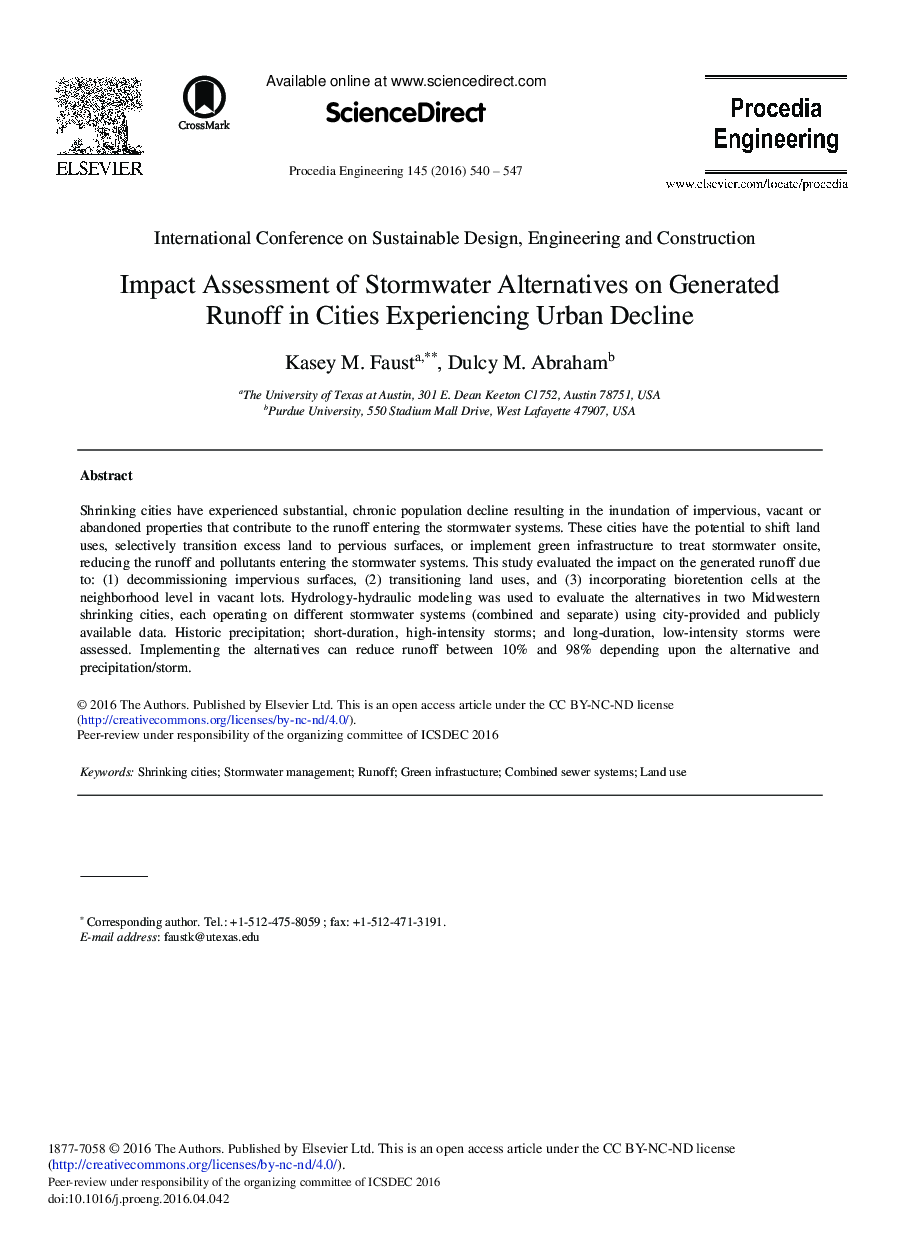| Article ID | Journal | Published Year | Pages | File Type |
|---|---|---|---|---|
| 853712 | Procedia Engineering | 2016 | 8 Pages |
Shrinking cities have experienced substantial, chronic population decline resulting in the inundation of impervious, vacant or abandoned properties that contribute to the runoff entering the stormwater systems. These cities have the potential to shift land uses, selectively transition excess land to pervious surfaces, or implement green infrastructure to treat stormwater onsite, reducing the runoff and pollutants entering the stormwater systems. This study evaluated the impact on the generated runoff due to: (1) decommissioning impervious surfaces, (2) transitioning land uses, and (3) incorporating bioretention cells at the neighborhood level in vacant lots. Hydrology-hydraulic modeling was used to evaluate the alternatives in two Midwestern shrinking cities, each operating on different stormwater systems (combined and separate) using city-provided and publicly available data. Historic precipitation; short-duration, high-intensity storms; and long-duration, low-intensity storms were assessed. Implementing the alternatives can reduce runoff between 10% and 98% depending upon the alternative and precipitation/storm.
